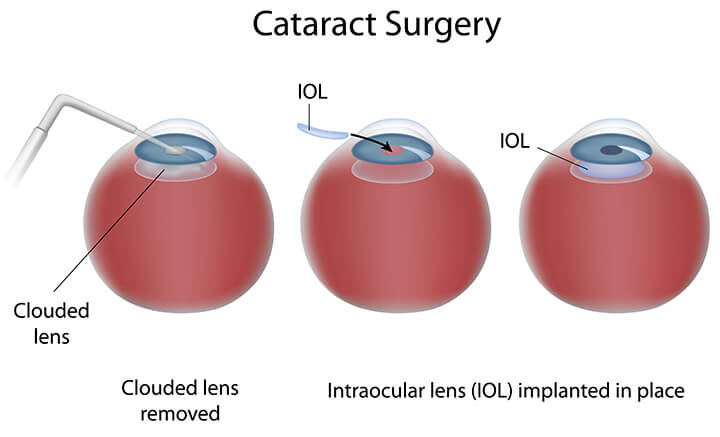Cataract Care
Cataracts and cataract surgery
A cataract is a clouding of the lens of your eye. The lens is the part of your eye that focuses light on the retina, where images form. Age is the most common reason to develop cataracts. More than 70% of adults develop them, mainly after age 40. Other causes include a previous eye injury or surgery and an inherited (genetic) eye disorder.

Factors that increase the risk of cataracts include:
- Smoking
- High blood pressure
- Obesity
- Long-term exposure to radiation, such as from X-rays or radiation treatments, or long-term sun exposure
- Long-term use of steroid medications
- Having family members with cataracts
- Having diabetes and some other diseases
What are the symptoms of cataracts?
You might not notice any symptoms at first, because cataracts tend to develop slowly. As they do, you might notice the following symptoms.
- Difficulty seeing well at night
- Difficulty reading, playing golf, sewing, or doing other activities that require sharp vision
- Blurred or double vision
- Glare or halos around objects
- Colors looking faded or yellow
- Needing a new prescription for glasses or contacts more often
How are cataracts treated?
An ophthalmologist can remove the clouded lens of your eye and replace it with an artificial lens. This lens is also called an intraocular lens, IOL or lens implant. Dr. Lyons is a highly experienced cataract surgeon who has helped many patients choose a new artificial lens and see better with cataract surgery.
Eye drops, medications, and eye exercises cannot remove cataracts or help you see better. Surgery is the only effective treatment. Fortunately, it is a very common and safe procedure. Most people see much better after cataract surgery.

Learn more about cataract surgery.
Learn more about cataracts and cataract surgery from the American Academy of Ophthalmology
